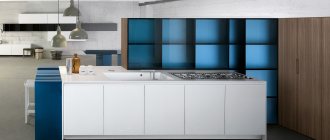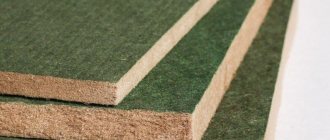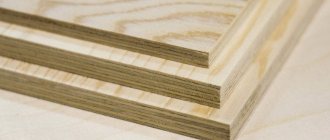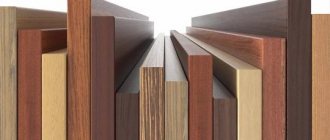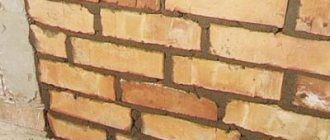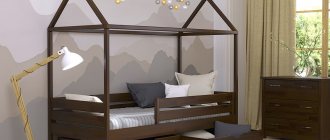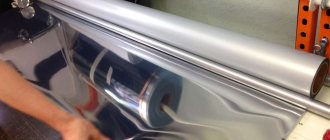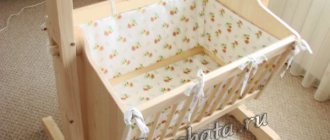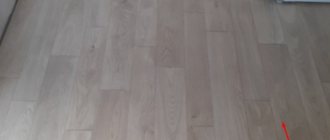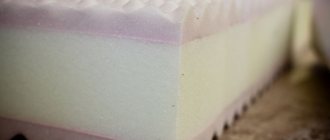When creating your own subwoofer and for its high-quality and loud sound, you should take into account a large number of important nuances. For example, what kind of speaker for the subwoofer you purchased, how correct is your box, is the amplifier power enough, is the amplifier enough power, etc.
In this article we will touch on one of the many issues that will help you get closer to louder and better bass. Namely, we will answer the question, from what material is it best to make a box for a subwoofer?
Why doesn't a subwoofer play without a box?
If we remove the speakers from the box of a working subwoofer, we will find that the bass that it reproduced efficiently will disappear. That is, a subwoofer without a box (acoustic design) does not play! Why is this happening? The subwoofer creates sound vibrations in both directions, i.e. forward and backward. If there is no screen between these sides, the sound vibrations cancel each other out. But if we place the subwoofer speakers in a closed box, we can separate the front and back of the subwoofer and get good quality sound. By the way, in a bass reflex box the box works on a slightly different principle; it reproduces sound in one direction, which increases the volume by about 2 times compared to Z/Y.
The principle of operation of subwoofer boxes
You say, why do we need this mess with frequencies, waves and boxes? The answer is simple, we want to clearly and simply demonstrate to you how the material from which the box is made affects the quality of the final result.
What happens if the box is made of poor quality material?
Now let's imagine that you made a box from your grandmother's closet, that is, you used chipboard material, which is only 15 mm thick. After that, a medium-power subwoofer was made from it. What will be the result?
Due to insufficient wall thickness, the rigidity of the box is reduced. When sound is reproduced, the walls of the box begin to vibrate, i.e. the entire box turns into an emitter; the sound waves that the box resonates, in turn, dampen the waves that the speaker emits from the front side.
Remember we said that a subwoofer speaker without a box simply cannot produce bass. Likewise, a low-rigid box will create only partial shielding, which will not be able to completely prevent the interpenetration of sound waves emitted by the subwoofer speakers. As a result, the output power level decreases and sound distortion occurs.
Band pass loudspeaker
The third type of subwoofer, quite often used in car installations (although less often than the previous two) is a bandpass speaker. If a closed box and a bass reflex are acoustic high-pass filters, then a band-pass filter, as the name implies, combines high- and low-pass filters. The simplest bandpass loudspeaker is a single 4th order (single vented). It consists of a closed volume, the so-called. rear chamber and a second one, equipped with a tunnel, like a conventional bass reflex (front chamber). The speaker is installed in the partition between the chambers so that both sides of the diffuser operate in completely or partially closed volumes - hence the term “symmetrical load”.
Of the traditional designs, the bandpass loudspeaker, in any version, is the champion in efficiency. Moreover, efficiency is directly related to bandwidth. The frequency response of a bandpass loudspeaker has the shape of a bell. By choosing the appropriate volumes and frequency tuning of the front chamber, it is possible to build a subwoofer with a wide bandwidth, but limited output, that is, the bell will be low and wide, or it can be with a narrow bandwidth and very high efficiency. in this strip. At the same time, the bell will stretch in height.
The bandpass is a capricious thing to calculate and the most labor-intensive to manufacture. Since the speaker is buried inside the case, it is necessary to go to some lengths to assemble the box so that the presence of a removable panel does not violate the rigidity and tightness of the structure. The impulse characteristics are also not the best, especially with a wide bandwidth.
How is this compensated? First of all, as stated - the highest efficiency. Secondly, the fact that all sound is emitted through the tunnel, and the speaker is completely closed. When assembling such a subwoofer, considerable opportunities open up for installing it in a car. It is enough to find a small place at the junction of the trunk and the passenger compartment where the mouth of the tunnel can be placed - and the way is open to the most powerful bass. Especially for such installations, JLAudio, for example, produces flexible plastic tunnel sleeves with which it offers to connect the subwoofer output to the cabin. Like a vacuum cleaner hose, only thicker and stiffer.
Which box you choose for your speaker is of course up to you. And our auto studio will make this box for you.
Source: shuma43.net
What should a subwoofer box be like?
The answer is simple. The main requirement that a subwoofer box must meet is its rigidity and strength. The stiffer the walls, the less vibration the subwoofer creates during operation. Of course, in theory, a box made of a ceramic slab or cast of lead with 15 cm walls would be considered ideal, but of course, this can be considered nonsense, since such subwoofers will not only be expensive to manufacture, but also enormously heavy.
Types and comparison of materials for a subwoofer.
Let's look at real options for materials for making a subwoofer and try to give a short conclusion on each of them.
Plywood
Better moisture resistant. In our opinion, this is one of the most worthy materials for the manufacture of acoustic equipment.
But there are a couple of downsides;
- This is the most expensive material.
- It is difficult to find plywood with a thickness of more than 18 mm.
- If the wall area is large, it begins to “ring” (additional stiffeners or spacers are needed)
MDF
Now it is gaining great popularity. It is a kind of gap between plywood and chipboard. Its main advantage is its lower price than plywood (about the same as chipboard) and good rigidity (but not as good as plywood). Easy to saw. Moisture resistance is higher than that of chipboard.
- It is problematic, but possible to find, a thickness of more than 18 mm.
Chipboard
Cheap, common material. Every furniture company has it, and you can order cutting from the same companies. This box will cost you 2-3 times less than one made from plywood. Flaws:
- Very little rigidity of the material (example about grandma’s closet above).
- Not moisture resistant. Absorbs moisture well and crumbles. It is especially dangerous if water gets into your trunk.
Purchased or made yourself
Making boxes for a subwoofer
Making a subwoofer box is a responsible process, but at the same time very interesting. Of course, you can always go to the store and buy a ready-made sub in a housing. But this is a matter for beginners. A professional always buys a subwoofer head separately and then makes the box with his own hands.
Note. The latter option is suitable not only for professionals, but also for people who are passionate about car audio and want to get the most out of the speaker. A subwoofer head placed in a homemade box will produce incredibly strong low-frequency sound.
Before we move on to the manufacturing process, let’s again dwell a little on the topic of purchased subwoofers complete with a housing. As has already become clear, there is no hope for quality here, but the price can attract a buyer. For some models of ready-made cases, the price is only 1 thousand rubles. Needless to say, the material of such a box cannot be expensive. The plywood is always thin, and the box itself cannot even boast of rigidity.
Note. A purchased subwoofer will not give you the right sound. And the same head, if you move it to another box you made yourself, you can connect it so that it sounds much stronger and of better quality.
How to increase the rigidity of the box?
- The first, the simplest and most obvious. This is the thickness of the material, the thicker the material, the greater the rigidity. When making a subwoofer, we recommend using materials of at least 18 mm, this is the golden mean. If your subwoofer has a power of more than 1500w RMS, then it would not be superfluous to choose a material thickness of 20 mm or more. If you have difficulty finding thick-walled materials, you can use the following recommendations.
- An option that will add rigidity to your box is to make a double front wall. That is, the front part in which the speaker is installed. This part of the subwoofer is most subject to stress during operation. Therefore, having a material width of 18 mm, making the front wall double we get 36 mm. This step will significantly add rigidity to the box. You should also do this provided that your subwoofer has an RMS (rated power) of more than 1500w. If you have a subwoofer with a lower power, for example, 700w, the front wall can also be made double. This makes sense, although the effect will not be very large.
- Another tip is to use spacers inside the subwoofer to add extra rigidity. This works especially well when the subwoofer has a large volume. Let's say you have two 12-inch subwoofers (speakers) in a box. In the middle, the rigidity of the box will be the smallest due to the large area. In this case, it would not hurt you to strengthen the structure and install a spacer in this place.
That's all we wanted to tell you about materials for the subwoofer. If this article helped you, please rate it out of five below.
Do you want to try to calculate the box yourself? Our article “Learning to count a subwoofer box” will help you with this.
Glass fabric
Fiberglass is used to make stealth subwoofers or to give non-standard shapes to parts of the housing. The mold is covered with fabric, impregnated with polyester resin. Using such material it is quite difficult to achieve the required thickness, so additional stiffening ribs must be used. In general, making such a case is a labor-intensive process, but the result is aesthetically worth it.
The question is often asked: “Does it make sense to remake a factory subwoofer enclosure?” If you remake the factory housing of a budget sub, there will be an improvement and it will be audible. But since the speaker is most likely bad, it will limit the degree of improvement.
For a high-quality subwoofer, choose the right material. Good luck with your builds!
Subwoofer housing. Shapes and materials
The subwoofer housing must be strong enough, otherwise its vibration will generate frequencies that will give undesirable coloration to the sound. In this article we will tell you what material is best to make a subwoofer enclosure from, as well as what types of enclosures there are for a woofer.
Multilayer plywood . There are many grades of plywood, many of which are not suitable for speaker cabinet construction. Regular plywood is not dense enough and will distort the sound. Multi-layer plywood is an excellent material for building small cabinet systems. This plywood is quite dense and lighter than chipboard and MDF. It is easy to work with, screw in screws without fear of delamination. The disadvantage of plywood is that large cases made from it begin to ring. To do this, when making cases for powerful subwoofers, plywood with a thickness of at least 18 mm is used; sometimes the walls of the box consist of a double layer of plywood. And in order to finally get rid of resonances, guy wires and amplifiers are installed inside the case. For more details about building a case from multilayer plywood, see the article: how to make a case for a subwoofer with your own hands. Chipboard . There are several types of slabs on sale, but chipboard of the highest density is recommended for cabinets. Although high-density varieties weigh more, they are easier to handle and sound better. High-density 16mm chipboard is perhaps the best choice for a higher-power low-frequency speaker system because it has the highest density and weakest resonant qualities. The disadvantage of this material is that it absorbs moisture easily and is difficult to cut with a saw. Chipboard cabinets should be painted to prevent swelling due to moisture. Medium Density Fiberboard . Essentially a form of compressed paper, it has a high density and is easy to cut. The disadvantage of fiberboard is that it is difficult to work with due to its tendency to delaminate when held together. It absorbs moisture a lot and quickly. As with chipboard, careful design must be taken both in terms of fastening and in preventing the effects of moisture. Sealed enclosures (closed box) . Perhaps the most common form of enclosure today is the sealed enclosure.
It is preferred due to the relative ease of development and construction. A sealed enclosure is an enclosure that completely seals the subwoofer's internal airspace from the external airspace. The air inside the box supports the speaker membrane and acts as an additional suspension for it. This allows the speaker to handle more power.
The range of emitted frequencies of the subwoofer depends on the volume of the enclosure. If the volume of the box is less than optimal, then the pressure inside the box will increase, which will lead to cutting off some frequencies and enhancing others. Instead of pure deep bass, the subwoofer will produce a booming, 'failed' bass. By increasing the volume of the box, the bass improves, but again to a certain level. The main task of designing a box is to determine its optimal volume for the selected woofer.
In practice, it often happens that a box is first designed based on the limitations of free space in the trunk of a car, and then a speaker is selected to fit the internal volume of this box.
The following figure shows a graph from which you can determine the approximate volume of the internal space of the housing for a given speaker diameter. Phase-inverted subwoofer enclosures are widely used in home speaker systems.
Currently, phase-inverted or ventilated enclosures are widely used in car audio systems. This body shape is unique in that the bass reflex (ventilation duct) helps in reproducing the lowest frequencies in the audible range. The bass reflex actually becomes a sound source that contributes to the overall sound of the subwoofer system. Phase inverted systems produce more bass with less power than sealed systems.
A properly designed vent will produce increased output at the tuned frequency. The sound of phase-inverted subwoofers is cleaner, but their volume is larger than that of sealed subwoofers for the same speaker.
The disadvantage of this type of subwoofer is the possibility of distortion when reproducing frequencies from a range below the design one.
Calculations of the parameters of a ventilated enclosure are more complex, and even small errors may not justify the effort and time spent. Errors in the design and configuration of the bass reflex can cause the speaker system to 'mumble' or the bass to be 'smeared'. The isobaric design of the case is a box in which two identical speakers are installed.
This design is based on the idea of having constant air pressure between the membranes of the two speakers. As a result, two acoustically coupled speakers function as one speaker. The advantage of this design is that it saves box volume.
The disadvantage of this design is that if there are two voice coils, only one membrane remains actually working. The overall output of an isobaric subwoofer is approximately 3 dB less than that of other subwoofers at the same input power. Structurally, a pair of speakers is located inside the housing on the same axis, membrane to membrane, magnet to magnet or magnet to membrane. Bandpass enclosures consist of two chambers between which a speaker is mounted.
One of the chambers is sealed, and the second chamber is phase inverted. This design provides very high quality low bass compared to other subwoofers, making them very popular in the car audio market. However, their acoustic output is relatively low. When designing bandpass boxes, one should take into account this relationship between the frequency response and the sound pressure that the housing develops. The lower and better the bass, the lower the acoustic output and power of the subwoofer. And vice versa, the more powerful the bandpass subwoofer, the higher and worse the bass it produces.
The disadvantage of this type of housing is the high complexity of calculations and relatively large dimensions compared to sealed or phase-inverted housings.
Manufacturing
Make a box for the subwoofer
What to make a subwoofer box from
Note. When choosing plywood, the main thing is to pay attention to its thickness. Try to select thick plywood, because the rigidity of the entire structure will depend on this, which will ultimately affect the sound. Thus, the optimal thickness for a subwoofer box is considered to be 18 mm. This is quite reasonable: you won’t have to spend a lot of money (the thicker the plywood, the more expensive it is) and the quality will remain at the same level. On the other hand, everyone decides for themselves and sometimes the weight of a homemade box can reach more than 50 kilograms.
Note. Don’t forget to buy a piece of carpet, which we will use to cover the box at the last stage of production.
We are building a building
First of all, we start making the body of the box. Started:
Note. You can do it differently. A hole of normal size is made in the first sheet, and a larger hole is made in the second sheet, which is on the outside. Thus, the subwoofer head will be recessed into the body, which has a positive effect not only on technical capabilities, but also on aesthetic components.
Note. In other words, it is advisable to tighten the screws every 3-5 cm.
Note. Over time, furniture screws do not become loose, even from constant shaking and vibrations.
We protect and modify the hull
Note. It is believed that a closed type of subwoofer box should not have any holes at all. And some experts even recommend checking the tightness of the box by pouring water inside. But this is already overkill and it is unlikely that this should be done.
How to make a box for a subwoofer
At this point, the process of making a subwoofer box with your own hands can be called complete. The instructions should not be ignored under any circumstances. Video reviews and photos are of no small importance - materials that also need to be given attention (see How to cover a subwoofer with carpet: we do it ourselves). Thus, the price of the subwoofer housing will be the lowest, since you will only need to spend money on consumables.
Source
